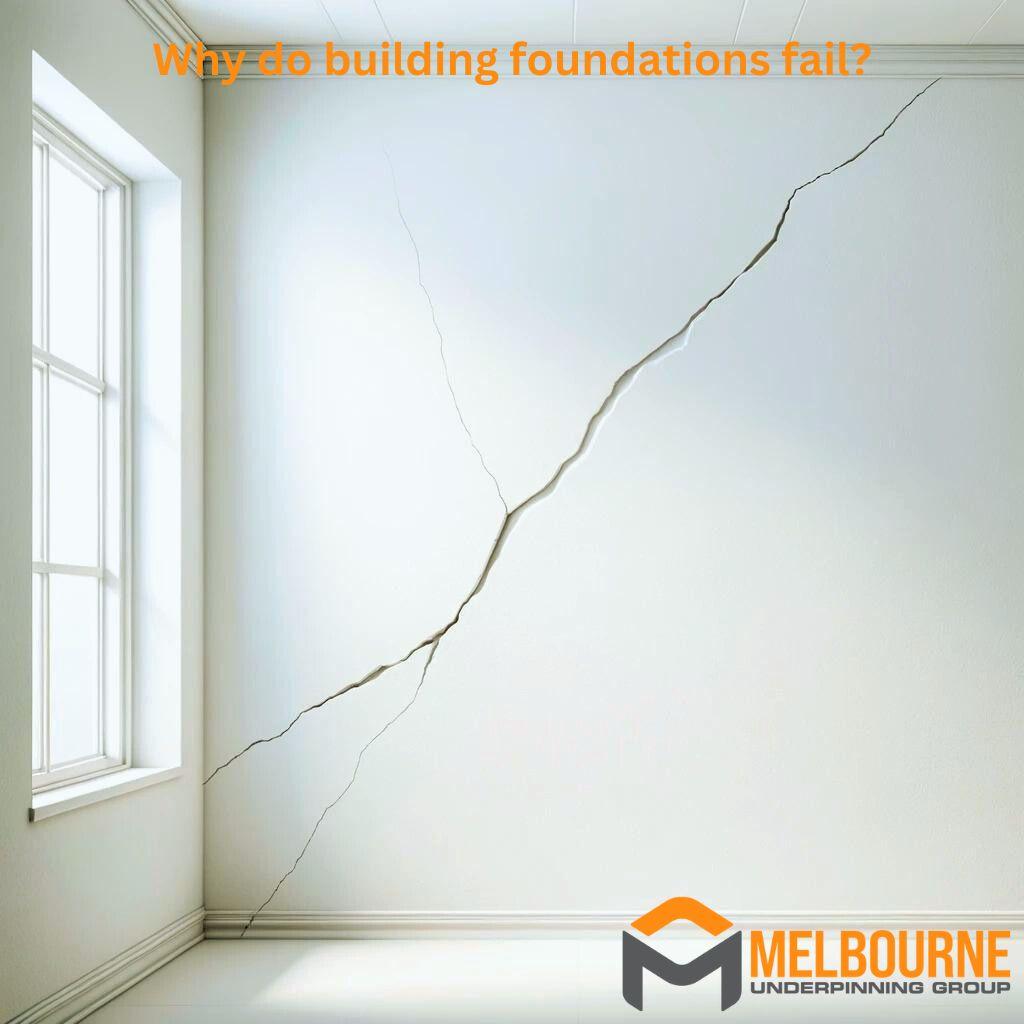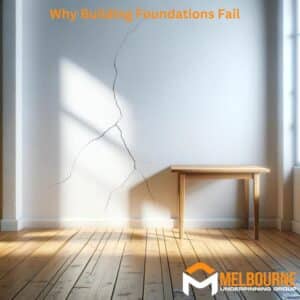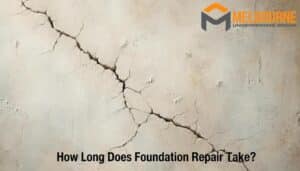
Building foundations fail due to a variety of factors, such as poor soil conditions, inadequate construction materials, and environmental changes. The foundation of a building is its backbone, and its stability is crucial in supporting the structure. When the soil beneath a foundation is inconsistently dense or prone to shifting, it can lead to instability and the need for foundation repairs. The use of inadequate or improperly prepared construction materials can also compromise the foundation’s strength.
In this post, we’ll discuss more in-depth why building foundations fail so you’ll know how to prevent it in future construction projects.
What Materials Are Used in Building Foundations?
Common materials used in building foundations include concrete, stone, brick, timber, and steel.
- Concrete: A popular choice due to its strength and durability, concrete is often used in the form of poured concrete walls or concrete blocks.
- Stone: Stone foundations, often found in older buildings, are durable but susceptible to moisture problems, requiring proper drainage systems.
- Brick: Brick foundations offer aesthetic appeal and are fire-resistant, but they need to be adequately sealed to prevent water infiltration.
- Timber: Primarily used in pilings for raised buildings, wood is versatile but requires treatment to prevent decay and resist pests.
- Steel: Used in the form of reinforcements (rebar) within concrete foundations, steel enhances the tensile strength of the foundation.
How Do Environmental Factors Contribute to Foundation Failure?
Environmental factors significantly contribute to foundation failure through variations in temperature, moisture levels, and natural disasters. Fluctuating temperatures cause materials to expand and contract, leading to cracks and weakening over time.
Excessive moisture due to rain or flooding can lead to soil expansion, putting pressure on the foundation. Meanwhile, drought can cause soil contraction, leading to foundation movement and cracking.
Understanding and mitigating these environmental impacts is crucial for the longevity and stability of a building’s foundation.

Which Construction Mistakes Lead to Foundation Weakness?
Construction mistakes, such as improper soil preparation, inadequate waterproofing, and poor material quality, often lead to foundation weakness.
- Improper soil preparation: Failing to compact and prepare the soil properly can result in uneven settling, leading to cracks and instability.
- Inadequate waterproofing: Without proper waterproofing, foundations are vulnerable to moisture damage, causing weakening over time.
- Poor material quality: Using substandard materials can reduce the foundation’s overall strength and durability, making it susceptible to various forms of damage.
What Preventive Measures Can Improve Foundation Longevity?
Effective preventative measures to enhance foundation longevity include proper soil preparation, adequate waterproofing, the use of high-quality materials, and regular maintenance. Consider these measures below to avoid having to get restumping and underpinning:
Proper Soil Preparation
Before laying the foundation, ensure that the soil is adequately compacted and prepared. This prevents uneven settling and the likelihood of cracks and other structural damages occurring over time.
Adequate Waterproofing
Implement comprehensive waterproofing to protect the foundation from moisture-related damages. Utilising membranes and coatings can help to prevent water infiltration, protecting the foundation from erosion and weakening.
Using High-Quality Materials
Invest in high-quality building materials that meet the necessary standards and specifications. High-quality materials enhance the foundation’s resilience against various environmental and load pressures, ensuring long-term stability.






